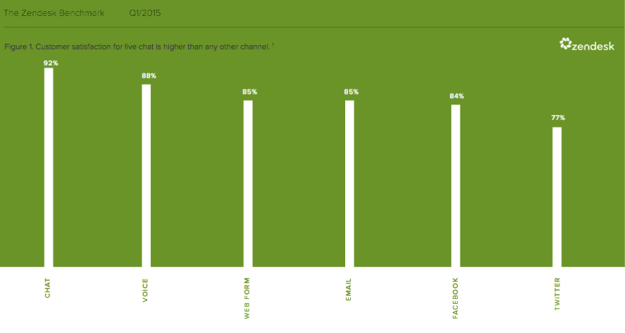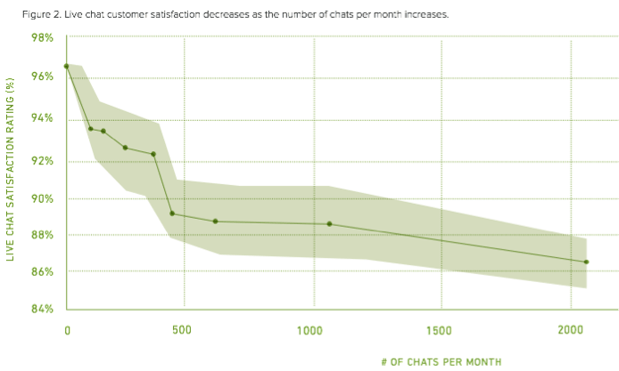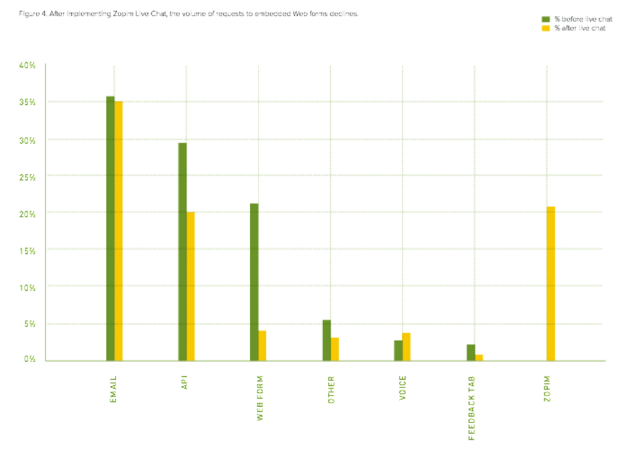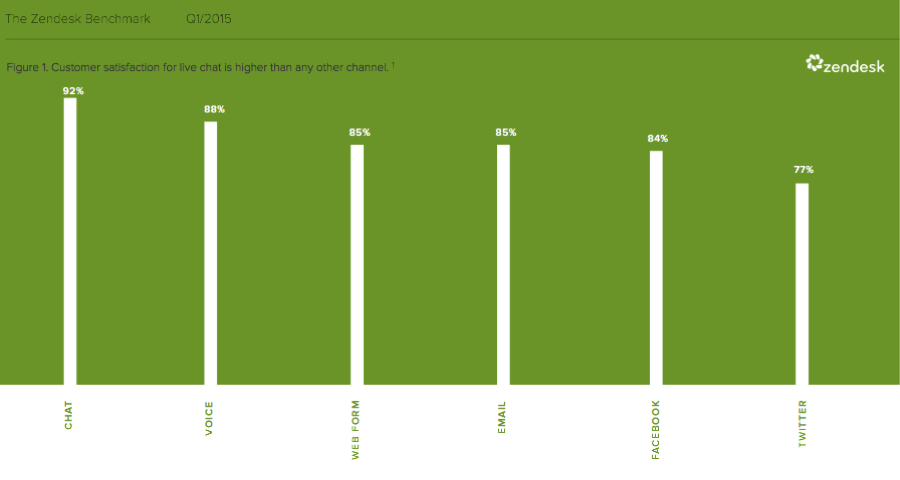According to Zendesk’s recent 2015 benchmarking report, live-chat ranks highest in customer satisfaction among all other service channels, with 92% of chat conversations receiving a positive satisfaction rating, followed closely by voice (88%), email (85%), and Facebook (84%). Praised for its convenience, speed, and ease-of-use, the channel’s adoption has increased significantly over the past five years among U.S. online shoppers (38% to 58%), and shows no signs of slowing down, as consumers become increasingly mobile and continue to carry out more transactions online.

What are some of the benefits of implementing a live-chat feature?
- Businesses that implemented live-chat saw ticket volumes from embedded web forms plummet
- 44% of online consumers say that having questions answered by a live person while in the middle of an online purchase is one of the most important features a website can offer
- 30% reduction in shopping cart abandonment
- 62% of Internet consumers said they would purchase more products online if live customer support were available (Anderson Consulting)
- 63% of customers were more likely to return to a website that offers live chat
- 62% reported being more likely to purchase from the site again
- 38% of respondents said they had made their purchase due to the chat session itself
- Saving just one second per chat can result in an overall time savings of 40-80 hours per year
- Some businesses have deflected 20-70% of calls with online chat
The Implications of implementing chat:
Although the benefits of offering live chat as a customer service channel remain abundantly clear, if improperly managed, doing so may not lead to the most favorable results. According to the Zendesk benchmarking report, customer satisfaction tended to fall as the number of chats per agent rose, indicating that larger agent workloads tended to directly impact the customer experience.

When offering a live chat function on a website, businesses should make certain not only that it is being monitored at all times, but also that they have enough representatives in place to handle large influxes of chat requests.
While real time chat received the highest customer satisfaction ratings among all service channels in the Zendesk benchmark report, voice was a close second (88% versus 92%), and is still expected to play a crucial role in business’ customer service offerings. In fact, when measuring how live-chat implementation impacted the volume of requests from other channels, all decreased with the exception of one channel: voice. Live chat implementation actually caused the volume of voice interactions to increase, indicating perhaps that while many consumers may prefer to communicate via chat initially, many of these interactions may eventually require the assistance of a live representative.

Key Takeaways
In today’s increasingly mobile and hypercompetitive business environment, offering live-chat as a service channel is a necessity. But as with all service channels, businesses need to ensure that it is properly supervised and managed by the appropriate department(s), and enough resources are dedicated towards making it a success. Additionally, contact centers need to ensure that by dedicating more resources to one channel (i.e. chat), the customer experience in another (voice, email, text, video, social media) will not be negatively impacted, as consumers increasingly hope to use 3 or more channels during a single transaction. By controlling all service channels from a single platform (multichannel communications platform), businesses can more easily handle cross-channel communications with their clients, facilitating their ability to meet and exceed customer expectations.





